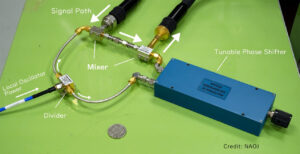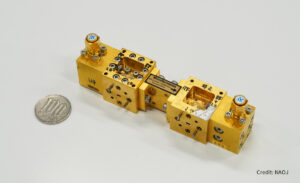Radio Wave Observations
Radio mission instrumentation team
Radio astronomy studies the invisible Universe by detecting radio waves emitted by celestial objects. ATC develops instruments for the radio telescopes of NAOJ research facilities, including the Nobeyama Radio Observatory (NRO) in Nagano, Japan, and the Atacama Large Millimeter/submillimeter Array (ALMA), built in northern Chile, through an international collaboration among East Asia, North America, and Member States of the European Southern Observatory, with the support of the Republic of Chile. ATC also provides support for the development of radio astronomy instruments by universities and related institutes.
Receivers for ALMA

The Advanced Technology Center has developed ultra-sensitive superconducting receivers in three frequency bands (bands 4, 8, and 10) for ALMA , and completed manufacturing and shipping a total of 219 units in February 2014. The shipped receivers are currently integrated on antennas and used for astronomical observations. The Advanced Technology Center maintains receiver test facilities for each band for receiver maintenance.
Technology Development for ALMA2
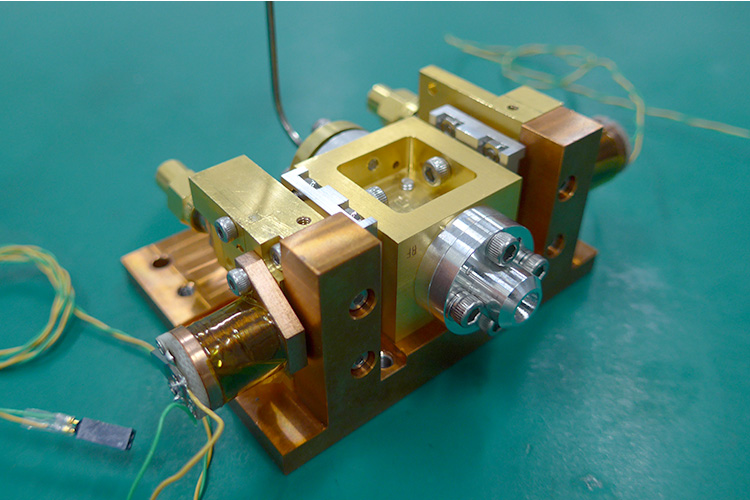
NAOJ has been developing technologies for the ALMA2 project, which aims to enhance the functionality of ALMA. The Advanced Technology Center is promoting the development of a receiver front-end and signal transmission system with the aim of increasing the simultaneous bandwidth to at least twice that of the current ALMA telescopes, in line with the ALMA Development Roadmap.
ASTE & NRO 45-m Radio Telescope
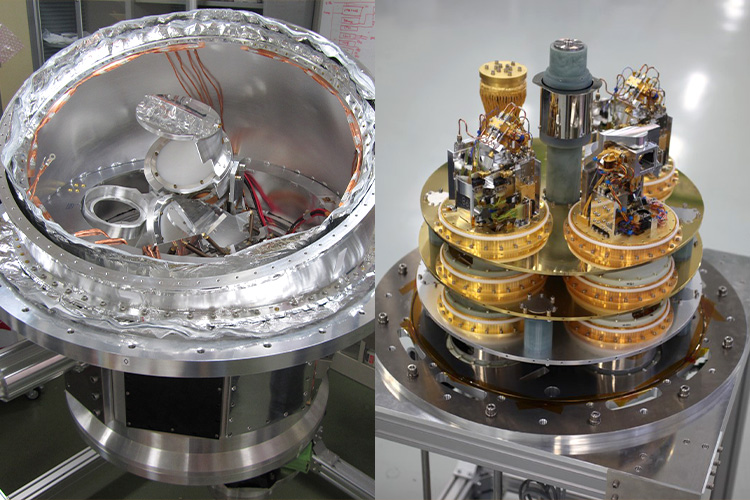
ASTE (Atacama Submillimeter Telescope Experiment) is a submillimeter-wave radio telescope with a 10-m dish operated by NAOJ at a site about 10 km away from the ALMA site.
The NRO 45-m Radio Telescope is the largest millimeter-wave radio telescope in Japan, operated by NRO (Nobeyama Radio Observatory) at Nobeyama, Nagano Prefecture. In collaboration with research institutes and universities in Japan and abroad, ATC develops new receivers for these telescopes as well as providing upgrades and support for existing receivers.
Cleanroom Facility
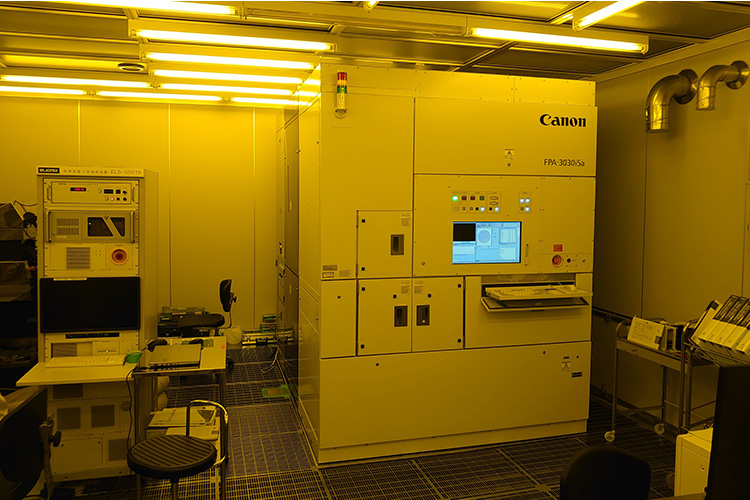
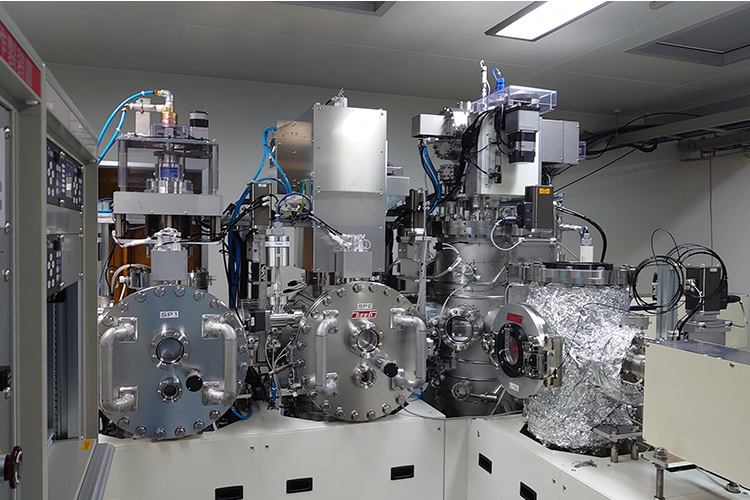
In a cleanroom, we develop superconductor-insulator-superconductor (SIS) mixers and other ultra-sensitive superconducting devices that are indispensable for radio astronomy. Based on submicron scale microfabrication techniques, we fabricate state-of-the-art devices such as high critical current density junctions; superconducting detectors and integrated circuits; and optical elements.
Radio Camera
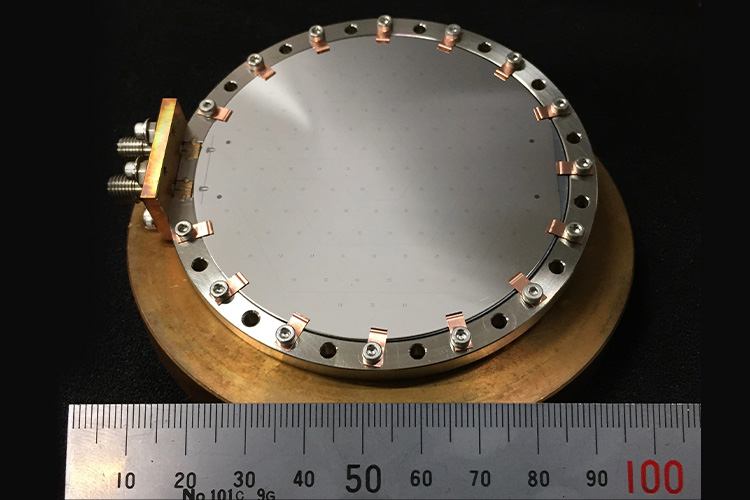
We are developing a radio camera to realize wide-field observation in a manner similar to visible and infrared light. We aim to develop a multi-pixel camera based on MKIDs (Microwave Kinetic Inductance Detectors).
"Development of Terahertz Intensity Interferometry"

For high angular resolution terahertz astronomy from the Antarctic plateau, intensity interferometer technology is being developed using superconducting photon detectors. Two 30-cm telescope will be installed on a new Dome-Fuji station, making use of photon bunching at nano-second scale to realize aperture synthesis imaging of astronomical sources.
The diagram shows the concept of the terahertz intensity interferometer on the Antarctic plateau.
Basic Technologies
Research on Time and Frequency Transfer Technologies
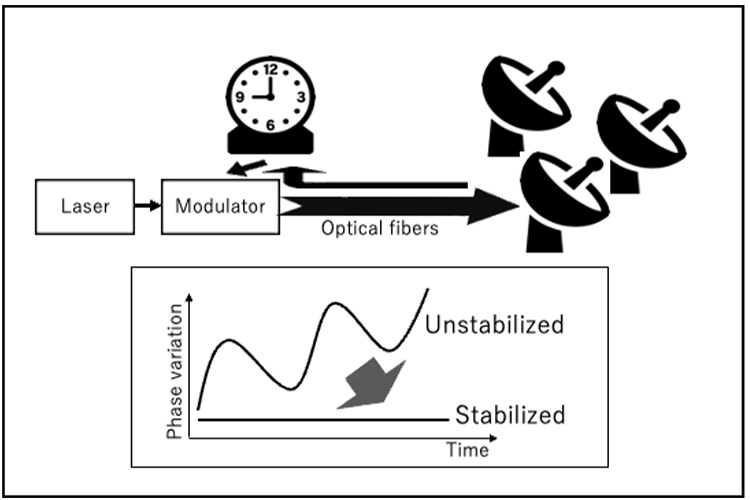
Research on Time and Frequency Transfer Technologies
A distribution system of timing and frequency signals has been developed to synchronize the antennas of radio interferometers such as ALMA and the next generation Very Large Array . Even in the absence of atomic clocks, highly stable signals can be obtained by compensating for signal-quality degradation due to accumulated noise during propagation. The technology is expected to be applied to communications technology.
Research on Superconducting Amplifiers
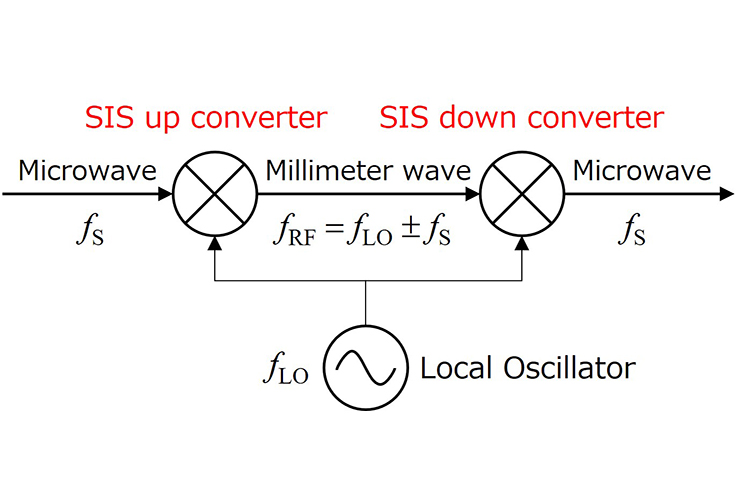
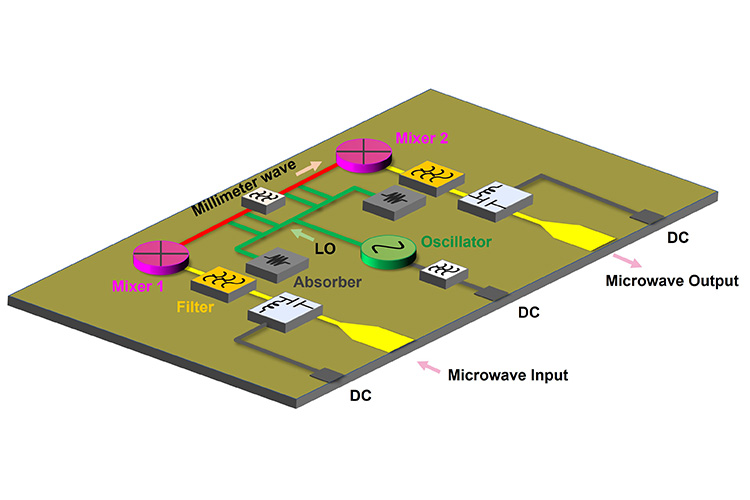
We have studied microwave amplifiers based on a new principle using SIS junctions, which have been applied as downconverters in the millimeter/submillimeter waveband. These superconducting amplifiers provide positive gain thanks to their frequency conversion processes; wideband low-noise characteristics with power consumption on the order of microwatts can be obtained. This two-frequency converter configuration also shows non-reciprocity in certain circuit phase conditions, a trait which can be utilized for isolator or circulator circuits without using magnetic materials. These functional microwave circuits are expected to be used in the fields of radio astronomy, quantum computers, etc.
Research and Development for Microfabrication Technology

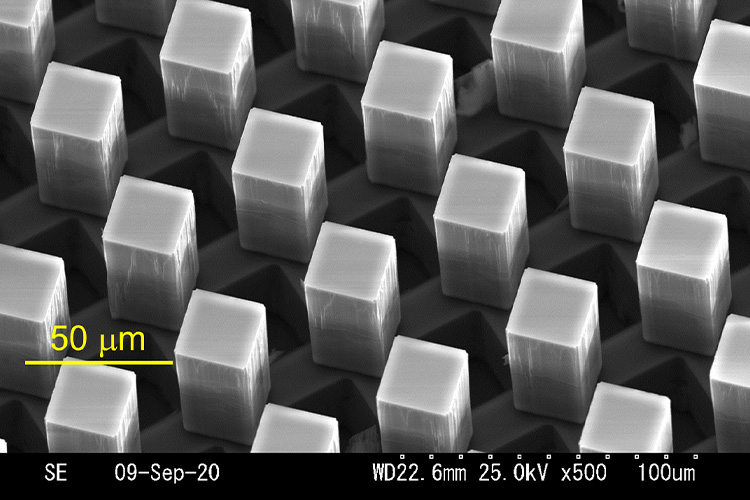
We are developing microfabrication technology to realize submillimeter-wave circuits of micrometer size on silicon substrates. This technology is fundamental for downsizing the multi-beam receivers for radio astronomy. This microfabrication technology is also expected to be applied to quasi-optical components in the terahertz band.
NEWS
Sho Masui of Advanced Technology Center Receives Two Presentation Awards
Sho Masui, a project research fellow at the Advanced Technology Center (ATC), received the Young Scientist Pre […]
Accurate Measurement of Permittivity Advances Radio Telescope Receivers and Next Generation Telecommunication Networks
Credit: NAOJ Researchers invented a novel method to measure the permittivity of insulators 100 times more accu […]
Novel Microwave Isolator Points the Way to New Radio Cameras and Quantum Computers
Researchers at the National Astronomical Observatory of Japan (NAOJ) invented a novel microwave isolator and d […]
Small But Mighty: New Superconducting Amplifiers Deliver High Performance at Lower Power Consumption
Researchers have devised a new concept of superconducting microwave low-noise amplifiers for use in radio wave […]



